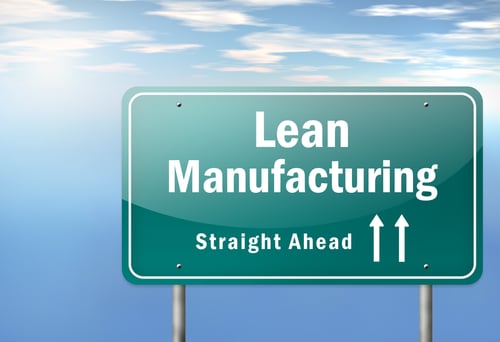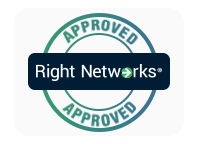
The Lean Enterprise Institute defines Lean as “creating more value for customers with fewer resources.” Embedded in this simple definition are a couple of important concepts, the first of which is the focus on value creation. A fundamental principle in the application of Lean is the relentless elimination of waste, defined as any task or activity that does not add value, so that value creation is the sole focus of the organization. The second concept embedded in the definition above is that the customer is the one who determines value. The entire organization must be aligned on the customer’s expectation of value and strive to do everything necessary to meet that expectation.
We introduce the above definition to make the larger point that Lean shouldn’t be reduced to a series of tools that are applied in an “ad hoc” manner within the business. The various Lean tools were born out of a customer- and performance-focused culture, not vice versa. Long story made short, it’s important to build the right mindsets and behaviors into the organization.
With that as background, there are numerous Lean tools that can be applied to the benefit of the business and some of these tools will be more applicable depending on the circumstances. With that in mind, here are a few thoughts on when to introduce certain Lean tools (we recognize that the list below is not exhaustive...we welcome comments based on your experience):
The Fundamentals
Certain Lean tools should be applied in any functioning manufacturing organization because they are crucial to good operations management, such as:
-
Hoshin Kanri/Policy Deployment - the organization needs to have a process for translating business strategy into specific actions at the plant, department, and team level
-
Standard Work - manufacturing is fundamentally about discipline and precision. In order to achieve the right outputs (i.e., customer-ready product) the inputs must be highly consistent. Standard work helps the operation to achieve consistent outputs
-
Leader Standard Work - how can the workforce be expected to work in a disciplined and precise manner if leadership does not demonstrate that behavior
-
Gemba Walks - the farther away that managers get from where product is made (i.e., the shop floor), the less likely they will be to make smart decisions about how to help the organization eliminate waste and create value for the customer. Managers at all levels need to make it a point to get out of the office and into the plant to learn, coach, and interact with the broader workforce in a constructive manner
-
5S - if the work environment is not organized, then it’s guaranteed that waste is present in the operation
-
Visual Management - transparency drives accountability, which is one reason why visual management is critical to a performance culture
Capacity Release or Manufacturing Flexibility
The list below highlights Lean tools that can be applied to either release capacity or increase operational flexibility and agility:
-
Single Minute Exchange of Die (SMED) - SMED adds tremendous value in environments characterized by frequent product changes but it can also be applied in just about any circumstance involving a fixed shut down, such as equipment sanitation or planned maintenance activity
-
Heijunka/Level Scheduling - a big productivity killer in many “make to order”operations is the waste caused by an oscillating production schedule. Conversely, “make to stock” operations can build up significant inventory (which is a form of waste) through poor scheduling. Level scheduling creates a stable production flow across time in order to avoid both the disruptions caused by a pure “make to order” strategy and the inventory build-up caused by the “make to stock” strategy
-
Value Stream Mapping (VSM) - VSM can be applied to great effect to streamline a physical product transformation process as well as the flow of information and materials that surround that process
Problem Solving
One of the most critical, and difficult, changes to drive in any organization undertaking a Lean journey is to develop in employees an instinct toward deliberate, structured problem solving. Most people, when confronted with a problem, naturally do two things that are anathema to effective problem solving; (1) they jump to conclusions based on assumptions or (2) they personalize the problem (i.e., “who messed up?”) instead of focusing on the process. Here are some Lean tools designed to counteract those tendencies in order to get to the true root cause of operational problems:
-
5 Why Analysis - This simple problem solving method is great for addressing relatively straight forward, situational operational problems. Often the 5 Why method is a great starting point when faced with an operational problem. If the potential solution doesn’t become clear through a 5 Why, then the problem may required a more sophisticated method.
-
Ishikawa/Fish Bone Analysis - this method can be used for problems that may have multiple related root causes and, because of that, some facilitated brainstorming is required
-
Fault Tree Analysis - less structured and more detailed than Fish Bone, fault tree analysis can be particularly effective for technical problems
-
Kaizen Event - A Kaizen event can be applied to drive rapid progress against an operational problem or otherwise drive a step change in performance in a compressed time period
Don’t Forget the Managing Process & Governance Model
What sometimes gets lost in the continuing dialogue about Lean is that driving these fundamental concepts and tools in a systematic way across a large organization requires a robust managing process and governance model. The workforce doesn’t just need to be taught what Lean is, they need to be led through the process of applying Lean in a constructive way and held accountable for improving their operational maturity. At Phase 5 Group, we help companies to drive continuous improvement models, whether based singularly on Lean or a combination of methodologies, that are transformative and sustainable because we understand the managing process and governance model that’s required to make the journey successful.
Additionally, we developed EON, the world’s first continuous improvement management platform, to make CI management and governance easier. EON provides visibility into operational maturity, strategy execution, and project pipeline health. This intelligence feeds a comprehensive scorecard that highlights the critical leading indicators to operational performance.
So if your organization is undertaking a Lean journey and you need to increase engagement, accelerate progress, or drive sustainability, please visit our web site at www.phase5group.com.




